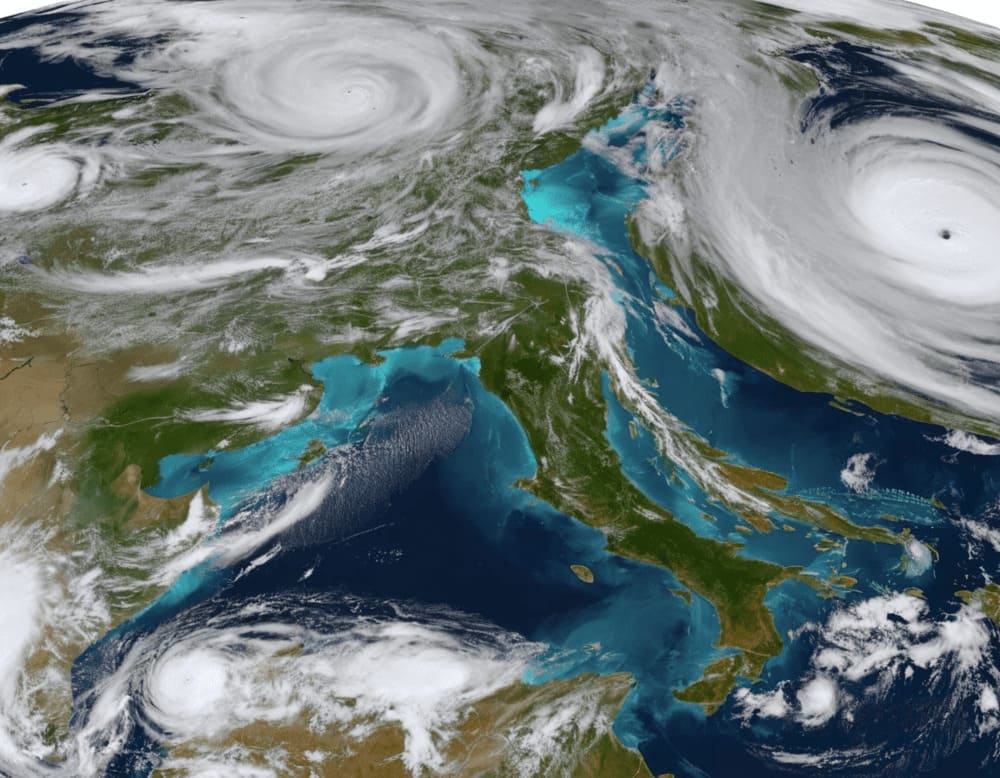Artificial satellites have revolutionized the way we understand and predict weather patterns. These sophisticated devices orbit the Earth, collecting and transmitting data that is critical for accurate weather forecasting. In this article, we will explore the significant role of weather satellites in weather forecasting, how they function, and their impact on improving our ability to predict weather changes.
The evolution of weather forecasting
Weather forecasting has come a long way from the days of rudimentary observations and manual data collection. The advent of satellites has transformed this field, providing meteorologists with precise and comprehensive data. These satellites offer global coverage, enabling scientists to monitor weather patterns over vast regions.
Types of weather satellites
There are two primary types of weather satellites:
- geostationary satellites: geostationary satellites remain fixed over one spot on the Earth’s surface, offering continuous monitoring of specific areas.
- polar-orbiting satellites: polar-orbiting satellites travel in a low Earth orbit, covering the entire globe as the Earth rotates beneath them.
This combination ensures a comprehensive view of the planet’s weather systems.
How weather satellites work
Satellites are equipped with various satellite sensors that collect data on atmospheric conditions. These sensors can detect different types of radiation, including visible light, infrared, and microwave signals. By analyzing these signals, scientists can determine various weather parameters such as temperature, humidity, and cloud cover.
Collecting and transmitting data
One of the most critical aspects of weather satellites is their ability to collect and transmit data in real-time. Data transmission systems onboard these satellites send the collected information back to Earth, where it is processed and analyzed by meteorologists. This real-time data is crucial for accurate and timely weather predictions.
Key applications of weather satellites
Satellites have a wide range of applications, from storm detection to climate monitoring. They play a vital role in identifying and tracking severe weather events such as hurricanes, typhoons, and cyclones. By providing early warnings, these satellites help in mitigating the impact of such disasters.
Improving forecast accuracy
One of the primary benefits of weather satellites is the significant improvement in forecast accuracy. The comprehensive data collected by these satellites feeds into complex weather models that simulate the Earth’s atmosphere. These models help meteorologists make precise predictions about future weather conditions, allowing for better preparation and response.
Satellite technology and innovations
The field of satellite technology is constantly evolving, with innovations aimed at enhancing data collection and analysis. Advances in satellite sensors and imaging techniques have increased the resolution and accuracy of the data collected. Infrared imaging and microwave sensing are two such advancements that have greatly improved our understanding of weather patterns.
Environmental and climate monitoring
Beyond weather forecasting, satellites are also essential for environmental monitoring. They help track changes in the Earth’s ecosystems, monitor deforestation, and assess the health of our oceans. This information is crucial for understanding the long-term impacts of climate change and developing strategies to mitigate its effects.
Challenges and future prospects
While weather satellites have significantly advanced our forecasting capabilities, there are still challenges to overcome. Space weather phenomena, such as solar flares, can disrupt satellite operations and data transmission. However, ongoing research and technological advancements promise to address these issues, ensuring the continued reliability of satellite-based observations.
The role of artificial satellites in weather forecasting is indispensable. These technological marvels provide critical data that enhances our understanding of the Earth’s atmosphere and improves our ability to predict weather events. As satellite technology continues to advance, we can expect even greater accuracy and reliability in weather forecasting, ultimately helping to protect lives and property from the impacts of severe weather.


